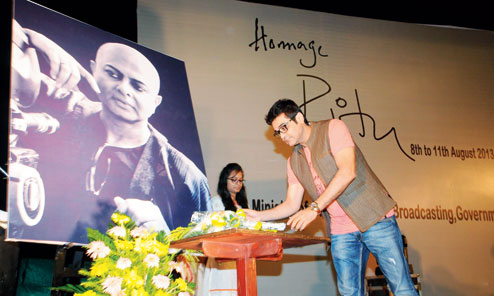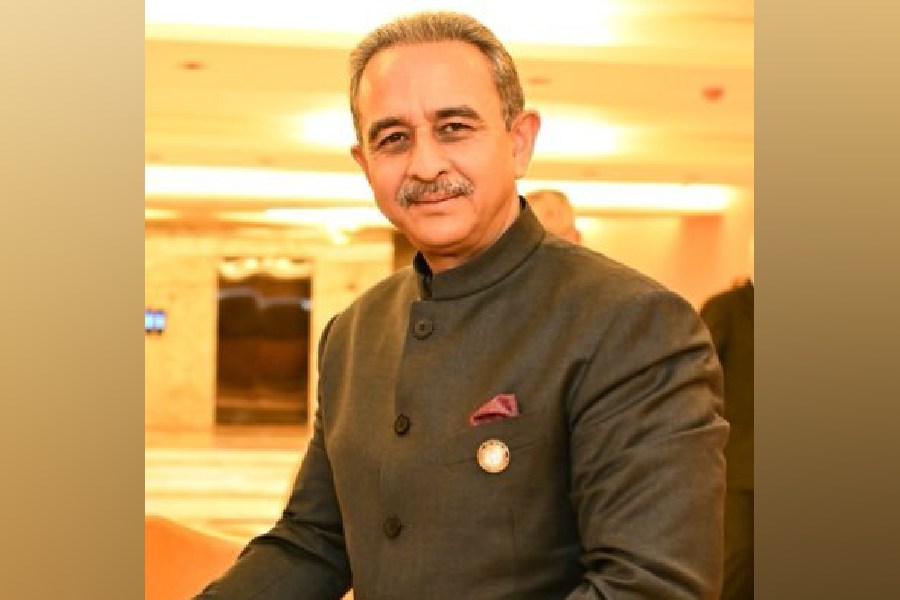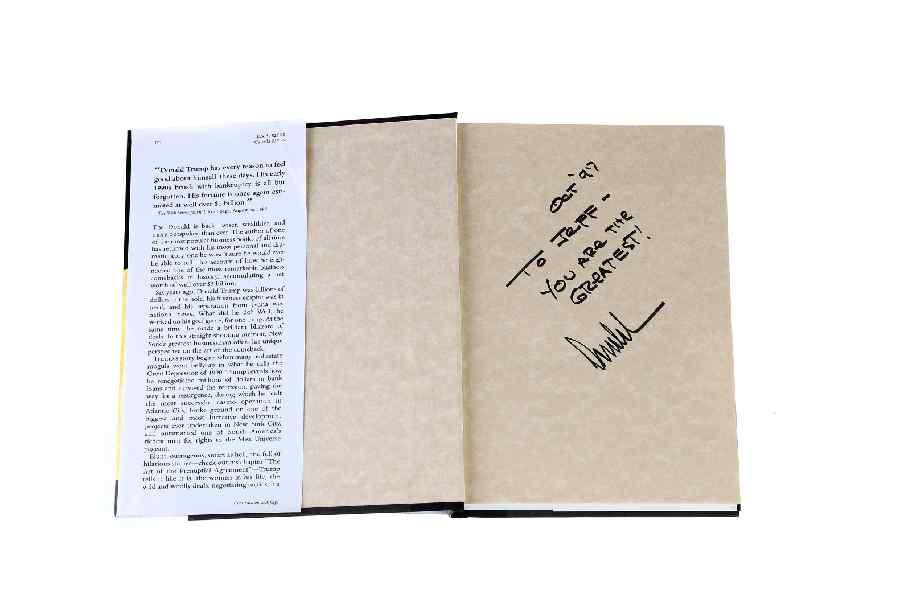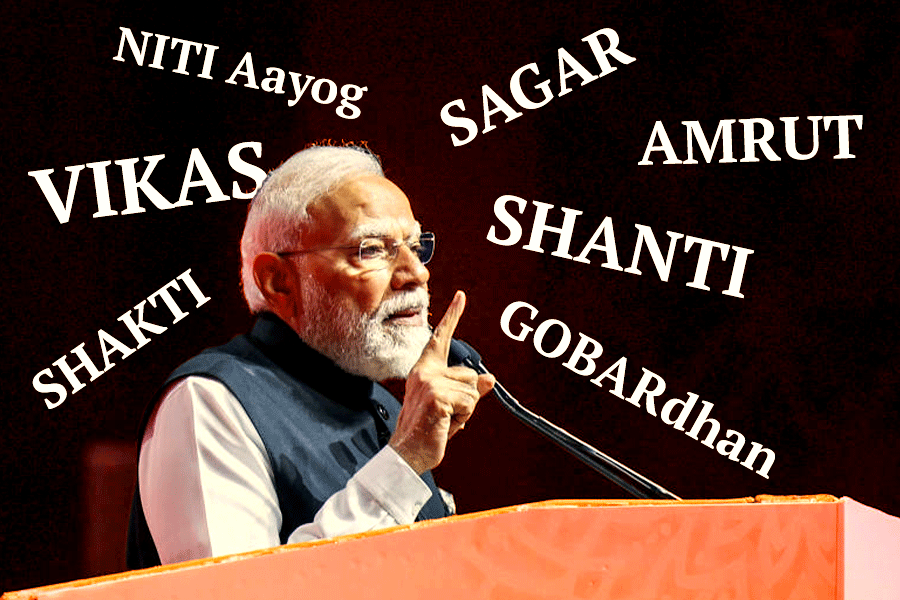 |
| Prosenjit pays tribute to Rituparno Ghosh at SRFTI on Thursday. Picture by Sayantan Ghosh |
Afilm that was never made to a sudden haircut on set... a host of people from Tollywood remembered Rituparno Ghosh at the opening ceremony of Homage Ritu, a four-day tribute to the filmmaker at SRFTI, on Thursday.
Prosenjit, Anjan Dutt, Kaushik Ganguly, Rituparna Sengupta, Raima Sen, Jisshu Sengupta, Indranil Ghosh, Arghyakamal Mitra and Raja Narayan Deb were among those who attended the programme and shared their memories.
“Rituparno is present in his works. His films should be made part of a (film studies) course. Future directors and actors would hugely benefit from that and be able to carry his legacy forward,” said Prosenjit.
Dutt spoke of a film “we had decided” to make together. “We wrote the script together, and were both supposed to act in the film. It was called Ananda Bhairabi, and Goutam Ghose was supposed to be its cinematographer. I had written a song, which was to be played at the end of the film. He liked it and told me to write a new album. The film didn’t happen,” he said, before breaking into the song.
Jisshu talked of the time when Rituparno cast him for The Last Lear, starring Amitabh Bachchan. “It was a dream come true. I had a scene with Arjun Rampal on the first day of the shoot. We were shooting in a village on the outskirts of Calcutta. Ritu da was present behind the monitor… I couldn’t see him. The shot was okayed on the fourth take. When I walked to the monitor, I saw a different Rituparno — he had gone completely bald! I had seen him with hair just a few minutes ago (he would often get a haircut during shoots). So I still can’t understand what or who Rituparno Ghosh is... to this day,” said Jisshu.
Raima said she had learnt a lot from Rituparno. “I am what I am today because of him. He is the one director who had immense faith in me. I called him up every time I was having a problem. I knew he was just a phone call away. I’m indebted to him for life. I miss him. I’m happy and honoured that I got to know the man.”
Kaushik Ganguly, who directed the “cinema-obsessed” Rituparno in Aarekti Premer Galpo, spoke of Rituparno’s dedication and eye for detail as he prepared for the character of an androgynous filmmaker. He recalled a day at Aurora Studio when Rituparno had dressed up as a woman for a scene. “It took him four hours to become a beautiful woman. He was so convincing. He asked us Rekhar moto lagchhe (am I looking like Rekha)? We said, ‘Better’!
After the scene was done, he removed his make-up. Our hairdresser told me that he was calling me to his make-up room. I saw that he was crying. He was upset. He said, ‘Etokkhon shomoy niye shajlam, shob shesh hoye gelo. (It took me so long to dress up and it’s all over now)’. I don’t think he ever dressed up as a woman again,” said Kaushik.
Tribute to Tagore
On August 8, the second day of the state’s Baishey Srabon celebrations at Rabindra Sadan, Manoj Mitra, Bibhas Chakraborty, Bijoylakshmi Barman, Debashish Roychowdhury and others presented Tagore’s Tyag.
 |
| A reading of Tyag at Rabindra Sadan. Picture by Anup Bhattacharya |
The original story, focussing on the tensions that arise when Hemanta finds out that his beloved wife Kusum is a non-Brahmin and therefore must be rejected, has not been expanded or altered. But some expert rearrangement of lines by Mitra made it sound like an excellent multi-layered dramatic script.
“Tagore’s writing is such that one needed to do very little. The natural descriptions in the story, when incorporated into the dialogues of the characters, create a space for introspection. The initial description of the night is repeated by Hemanta and Kusum at the end but the way it is spoken gives an insight into the characters’ changed emotions,” Mitra said.
Website launch
The School of Media, Communication and Culture at Jadavpur University launched a website on Daftaripara on July 31. Seventeen present and former students of the university worked hard over the last year to put together audio and video clips, transcripts and artwork for the website (www.daftaripara.org).
The launch was followed by two panel discussions on the book-binding hub and digital documentation. Biswajit Ghosh, a professor of sociology at Burdwan University, said the website made him want to revisit Daftaripara, where “I did my research”. “There have been many changes in these years. The industry is dying,” he said.
Filmmaker Nilanjan Bhatacharya lauded the students for their hard work. “It deserves appreciation. This website is an archive and here is a possibility for other groups to get more footage and work extensively on Daftaripara,” he said.
Tailor-made spa
A former Calcuttan, now a Bangalore resident, got a leaflet with her newspaper one morning, advertising a new spa that claimed it would provide customised packages to its clients. Intrigued, she called the place.
 |
A pleasant voice confirmed that there were several packages indeed. One was the homemaker package, one the frequent traveller package, and, the most popular, the IT package.
Research, the spa employee said, had proved that for homemakers the focus area was the lower back and spine, the frequent traveller the legs, and for IT professionals, the neck and the shoulders. They were thinking about several other packages, the spa said.
We wonder when Calcutta spas would offer such customised deals and what the packages would be: the auto-rickshaw package, the Metro commuter’s package, the pothole survivor’s package?
(Contributed by Arindam Chatterjee, Sebanti Sarkar, Malancha Dasgupta & Chandrima S. Bhattacharya)










